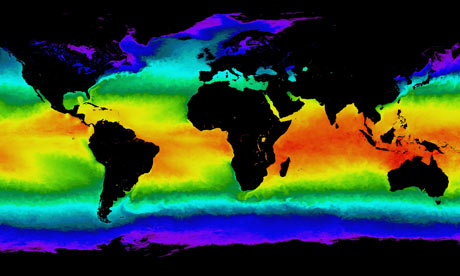by: David Adam
Experts need to beef up ways to measure the heat content of oceans as a way to track more reliably the course of global warming, scientists say today.
Kevin Trenberth and John Fasullo, climate scientists at the National Centre for Atmospheric Research in Boulder, Colorado, say that only about half of the heat believed to have built up in the Earth in recent years can be accounted for. New instruments are needed to locate and monitor this missing heat, they say, which could be storing up trouble for the future.
"The heat will come back to haunt us sooner or later," Trenberth said. "The reprieve we've had from warming temperatures in the last few years will not continue. It is critical to track the build-up of energy in our climate system so we can understand what is happening and predict our future climate."
Although the rise in surface temperature in recent decades is the most well-known consequence of the thickening blanket of greenhouse gases around the Earth, it represents just a tiny fraction of the extra heat trapped. Most of the extra solar energy heads straight into the oceans, where it is stored as warmer water. Some goes into melting glaciers and polar ice, as well as warming the land and atmosphere.
Writing in the journal Science, the scientists say their calculations show that current measurements can only account for half the extra heat trapped by human emissions. Much of the rest is probably in the deep ocean, they say. Some heat increase has been detected in the upper ocean, but there is no routine monitoring below depths of about 3,000m.
Fasullo said: "Global warming at its heart is driven by an imbalance of energy. More solar energy is entering the atmosphere than leaving it. Our concern is that we aren't able to entirely monitor or understand the imbalance. This reveals a glaring hole in our ability to observe the build-up of heat in our climate system."
The missing heat is important, they say, because it could be released as weather phenomena such as El Niño, in which the upper waters of the tropical Pacific ocean warm, and La Niña, which often follows. La Niña events have been linked to cold weather, while El Niños drive storms.
The scientists say: "How can we understand whether the strong cold outbreaks of December 2009 are simply a natural weather phenomenon, as they seem to be, or are part of some change in clouds or pollution, if we do not have adequate measurements?"

No comments:
Post a Comment